Do you want to develop an app like Apple Pay?
Apple Pay is one of the most popular payment applications in the market today, being the market leader in the US. This has inspired a lot of businesses and start-ups alike to develop their own Apple Pay Clone.
The first question that comes to mind when considering this project is:
“How Much Does It Cost To Develop An App Like Apple Pay?”
On average, Apple Pay app development costs range from $50,000 to $3,00000 based on complexity, platform, tech stack, and so on.
However, there’s much more that goes into it than what meets the eye.
But don’t worry, we shall be discussing all you need to know about developing an app like Apply Pay, covering features, monetization, cost, as well as factors that affect it.
Let’s get right into it, starting with a brief introduction.
Apple Pay: Apple’s eWallet Masterclass
If you use digital payment apps, you already know which app we are talking about today.
Apple Pay is a mobile wallet and contactless payment service by Apple. It allows users to make secure in-store, in-app, and online payments using their Apple devices.
While limited to the iOS platform, Apple Pay has a significant presence in the mobile wallet market.
Here are some statistics to consider:
- Digital payment statistics show that transactions made via Apple Pay account for around 5% of all card transactions globally.
- In the US, Apple Pay holds a dominant position in mobile wallet payments, accounting for over 90% of such transactions in 2020.
- There are estimates that Apple Pay has over 500 million users worldwide.
- The use of mobile wallets like Apple Pay is expected to grow. Fintech statistics forecasts predict Apple Pay’s share of the card transaction market to reach 10% by 2025.
Top Features of Apple Pay
So what makes Apple Pay so special? The answer is, the platform’s digital payment app features!
Despite being a simple and to-the-point app, this iOS payment application has changed how we pay in our day-to-day lives.
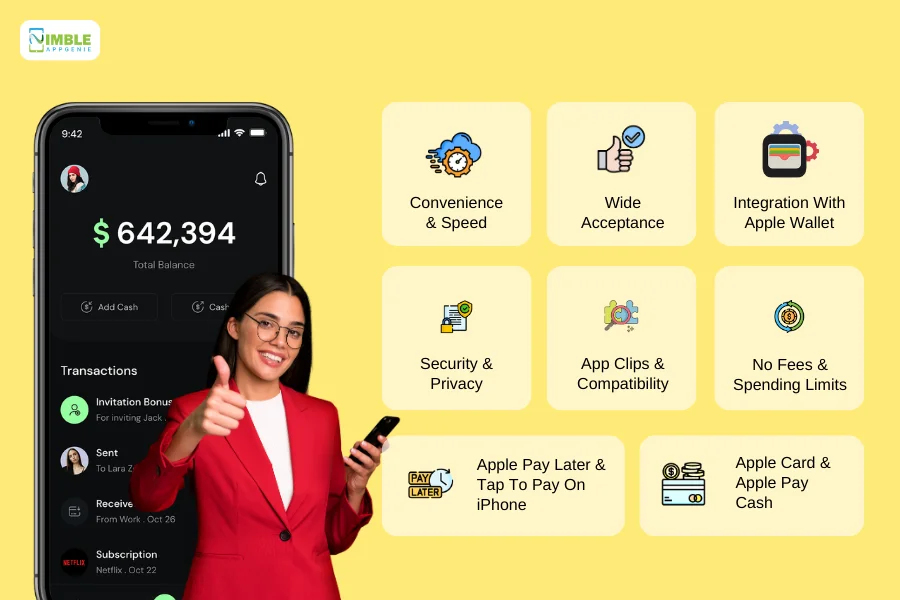
Here’s how it does that:
1. Convenience and Speed
Apple Pay transactions are known for their speed, often being up to twice as fast as traditional payment methods.
Users can activate Apple Pay on their iPhones with Face ID or Touch ID, then hold their device near a point-of-sale terminal to complete the transaction without sharing their card information with the merchant.
That’s the power of contactless payment.
2. Wide Acceptance
One of the key forces behind its success among users is wide acceptance.
Apple Pay can be used virtually anywhere that accepts contactless payments, including in stores, online, in apps, and at certain ATMs, universities, ballparks, and more.
It is supported by thousands of banks and credit unions in the U.S. and is available in numerous countries worldwide.
3. Integration with Apple Wallet
When it comes to integration, Apple Pay is unmatched.
Users can add multiple cards to their Apple Wallet. This includes credit and debit cards, store cards, boarding passes, movie tickets, coupons, and more, for use with Apple Pay.
This feature extends to certain transit and student ID cards, which can even work on a device when the battery is depleted.
4. Security and Privacy
In the world of digital payments, app security is paramount.
Apple Pay enhances security by using a tokenized Device Primary Account Number and unique dynamic security codes for transactions, keeping the user’s actual card number secure.
In addition to this, each transaction requires authentication through Face ID, Touch ID, or a passcode.
5. Apple Pay Later and Tap to Pay on iPhone
Apple Pay Later offers a buy now, pay later service, allowing users to split purchases into monthly installments.
Tap to Pay on iPhone enables third-party merchants to accept payments directly on their iPhones without the need for additional hardware.
Also Read: BNPL vs Credit Cards, Loans, EMIs
6. Apple Card and Apple Pay Cash
The Apple Card offers cashback on purchases, with an increased rate for Apple Pay transactions.
Apple Pay Cash allows for peer-to-peer payments and can be used anywhere Apple Pay is accepted.
7. App Clips and Compatibility
App Clips enables users to interact with parts of apps without needing a full download, facilitating quick transactions using Apple Pay.
Apple Pay is compatible with a wide range of Apple devices, ensuring a broad user base can benefit from its features.
8. No Fees and Spending Limits
Lastly, Apple does not charge a fee for using Apple Pay. However, international fees imposed by your card issuer may apply.
Spending limits are typically set by the bank or card issuer, with some limits on Apple Cash payments.
So, these are the top features of Apple Pay. Why is this out of the way, let’s answer the big question.
Why Develop an App Like Apple Pay?
Before we dive any deeper into the topic, let’s first answer a question more common than “How much does it cost to develop an Apple Pay like app”?
This is, why develop an eWallet app?
You see, there are many who want to develop an eWallet app. But this is not a cheap consideration, as it can send you back multiple thousand dollars.
So, is it worth it?
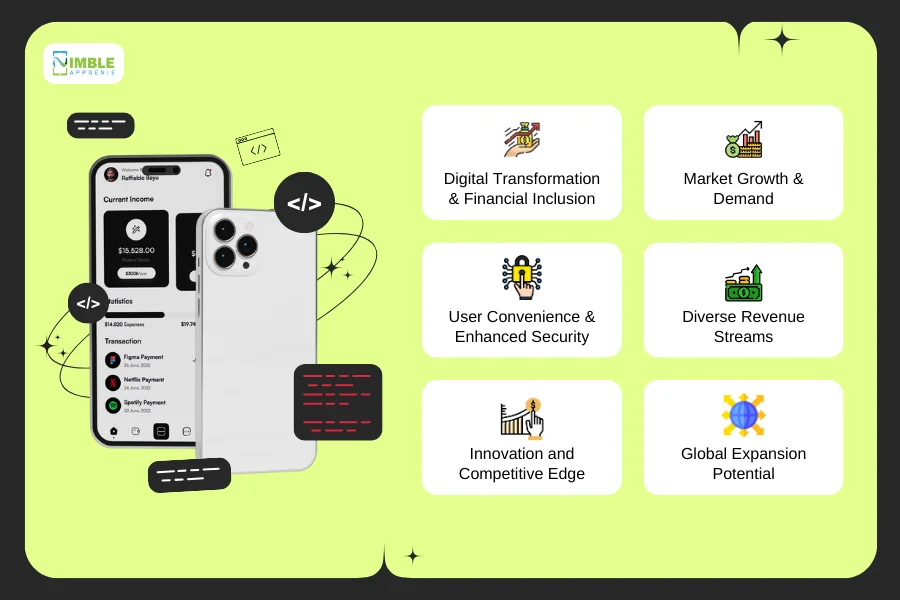
Well, the short answer is YES. And the longer one is:
1. Digital Transformation and Financial Inclusion
For large financial institutions and startups alike, creating a digital payment app represents a pivotal shift towards digital transformation.
It enhances the customer experience by transitioning from traditional, in-person financial transactions to a more accessible, digital-first approach.
This shift not only streamlines operations and reduces reliance on physical banking infrastructure, but also opens up financial services to a broader, potentially underserved audience.
Therefore, promoting financial inclusion.
Also Read: Why Do Digital Wallet App Startups Fail?
2. Market Growth and Demand
One of the biggest reasons people want to create an app like Apple Pay is, the market demand.
The digital payments sector is experiencing significant growth, driven by increasing consumer preference for convenient, quick, and secure transactions.
The global P2P payment market, for example, is projected to reach substantial valuations by 2030, showing CAGR of 17.3%.
This growth signifies a rising demand for digital payment solutions, offering a promising market.
3. User Convenience and Enhanced Security
Digital payment apps like Apple Pay prioritize user convenience by enabling seamless transactions through mobile devices, eliminating the need to carry cash or physical cards.
In addition to these, these apps incorporate advanced security features such as biometric authentication and tokenization to protect user data and transactions.
Thus, providing a secure and trustworthy platform for users .
4. Diverse Revenue Streams
Developing a payment app can open up various revenue streams, from transaction fees and premium feature subscriptions to partnerships with financial institutions and merchants.
This diversification can lead to sustainable business models and growth opportunities in the fintech space.
Also Read: Different Mobile App Monetization Strategies
5. Innovation and Competitive Edge
By entering the digital payment app market, app developers have the opportunity to innovate and differentiate their offerings with unique features, integrations, and user experiences.
Staying ahead of technological advancements and consumer trends can provide a competitive edge in a crowded market.
6. Global Expansion Potential
Digital payment apps have the potential to scale globally, tapping into international markets and accommodating cross-border transactions.
This global reach can significantly expand the user base and open up new market opportunities.
Cost to Develop an App Like Apple Pay
So, how much does it cost to develop an app like Apply Pay?
On average apple pay app development cost may range between $35,000 and $60,000 depending on various factors, as development cost of an e-wallet app does.
| Complexity Factor | Impact on Cost | Estimated Cost Range |
| 1. Basic Features Only | Lower end | $35,000 – $40,000 |
| 2. Advanced Security Measures | Moderate impact | $40,000 – $45,000 |
| 3. Custom UI/UX Design | Moderate impact | $45,000 – $50,000 |
| 4. Integration with Banks | Higher impact | $50,000 – $55,000 |
| 5. Cross-Platform Compatibility | Higher impact | $55,000 – $60,000 |
Now, there are various factors which affect cost to develop a solution like this.
Factors That Affect Apple Pay Like App Development Cost
To get an accurate cost estimate for Apple pay app development, you need to connect with an app development company.
However, that shouldn’t stop you from understanding how these different factor do affect the cost to build Apple pay like app.
So, let’s see the effect of different factors on the total cost:
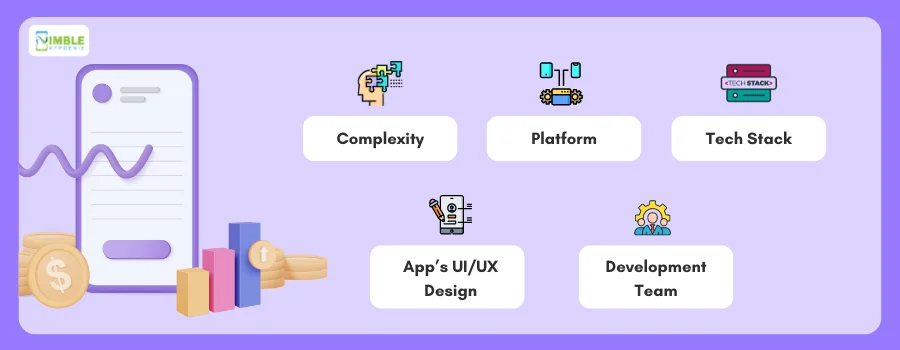
A] Complexity
Let’s start with the most important factor, complexity.
Complexity of the digital wallet app idea and the final product, highly affects the total app development cost that went into it.
Why?
Well, the answer is simple, the more complex an app is, the more effort, time, and expertise is required. All of which adds up to the total cost.
| App Complexity | Estimated Development Cost | Factors Influencing Cost |
| Highly Complex App | $55,000 – $60,000 | Advanced security features, multiple integrations, custom UI/UX design, cross-platform compatibility, extensive testing |
| Average App | $45,000 – $55,000 | Moderate features, some custom UI/UX elements, a few third-party integrations, medium user base, comprehensive testing |
| Simple App | $35,000 – $45,000 | Basic functionality, minimal UI/UX customization, limited third-party integrations, smaller user base, basic testing |
This is how much does it cost to develop an app like Apple Pay, across different complexities along with the factors that add to the complexity.
With this out of the way, let’s move to the next factor that we shall be discussing, the platform.
Also Read: Google Pay vs. Apple Pay vs. Samsung Pay
B] Platform
Second up, we have platforms.
You see when you are creating an app like Apple Pay, the first thing you need to choose in terms of technicalities is a platform.
Choosing between iOS and Android can be tough, but did you know that the choice can also affect mobile app development costs?
Well, it can!
Here’s how different platforms would affect Apple Pay clone app development cost.
| Platform | Estimated Development Cost | Key Considerations |
| iOS App | $50,000 – $,300000 | iOS apps are known for their high-quality standards and strict App Store guidelines. Costs might be on the higher end due to the need for specialized development skills and extensive testing. |
| Android App | $45,000 – $3,00000 | Android apps can reach a wider audience given the platform’s market share. Development might involve dealing with a variety of devices and screen sizes, influencing the cost. |
| Cross-Platform App | $50,000 – $3,00000 | Cross-platform development allows for a single codebase to run on both iOS and Android, potentially saving time and resources. However, complex apps might still require platform-specific adjustments, impacting the cost. |
| Web App | $40,000 – $3,00000 | Web apps are accessible on various devices through a browser, which can reduce development costs. However, they might lack some functionalities compared to native mobile apps. |
Speaking of selecting technology, it’s time to look at an important aspect: the tech stack to build a payment app.
C] Tech Stack
For those who don’t know, mobile app tech stack refers to the set of technologies used in app development. This covers everything from programming languages to frameworks.
Now, an eWallet app tech stack is very, very important when you are developing an Apple Pay clone.
Again, the tech stack does have a massive effect on payment app development costs due to it being a core aspect of the platform.
Here’s a representation of the potential tech stack and its associated cost.
| Technology Component | Potential Technologies | Cost Influence | Estimated Cost Range |
| 1. Frontend (Mobile) | React Native, Swift (iOS), Kotlin (Android) | High (Especially for native apps due to separate codebases for iOS and Android) | $20,000 – $55,000 |
| 2. Backend | Node.js, Ruby on Rails, .NET | High (Complexity of transactions and security measures can drive up costs) | $25,000 – $40,000 |
| 3. Database | PostgreSQL, MongoDB, Firebase | Moderate (Depends on data volume and complexity) | $10,000 – $15,000 |
| 4. Payment Gateway | Stripe, PayPal, Braintree | Moderate to High (Integration complexity and transaction fees) | $5,000 – $10,000 (excluding transaction fees) |
| 5. Security | OAuth, JWT, SSL/TLS encryption | High (Essential for protecting user data and transactions) | $15,000 – $25,000 |
| 6. Cloud Infrastructure | AWS, Google Cloud, Azure | High (Scalability and data storage needs) | $5,000 – $10,000 (monthly recurring) |
With the table representation, it’s much easier to understand how tech stack choices can affect Pay app development cost.
Now, let’s move to app design.
D] App’s UI/UX Design
What’s a common theme in top digital payment apps? They all look amazing.
Again, UI/UX design is half of the app itself.
Now, design has a lot behind it, from basic HTML layers to all the way up to animations and advantage graphics. As we move towards higher quality, the investment also greatly increases.
But rest assured, the cost that goes into the payment app design is well worth it.
E] Development Team (Location & Expertise)
Lastly, we are onto eWallet app developers.
Now, it goes without saying that a major portion of Apple Pay clone development cost goes to finding app developers and hiring them.
You see, the cost to hire app developers is affected by 2 major factors.
Starting with the first one is, their expertise:
| Developer Expertise | Description | Estimated Hourly Rate |
| Junior Developer | Basic skills require guidance. | $15 – $35 |
| Mid-Level Developer | Proficient in core skills, somewhat independent. | $35 – $75 |
| Senior Developer | High expertise, leads projects, mentors others. | $75 – $150+ |
And then, it’s about their location:
| Developer Location | Description | Estimated Hourly Rate |
| North America | Higher living standards, higher costs. | $43.91 – $49.57 |
| Western Europe | Similar to North America. | $40 – $100 |
| Eastern Europe | Lower costs and growing tech hubs. | $25 – $49 |
| Latin America | Competitive rates and time zone advantages. | $4 – $20 |
This is one of the most important factors when speaking of the cost of making an app like Apple Pay. With this out of the way, it’s time to look at app development time in the section below.
How Long Does It Take to Make an Apple Pay Clone?
Now that we are done with cost to develop Apple Pay Clone, it’s time to look:
“How long it takes to develop an app like Apple Pay?”
On average, if you want to develop an app like Apple Pay, it ranges between 6 and 12 months. Again, the factors that affect development time are similar to the ones we discussed in cost.
In any case, here’s a breakdown:
| Development Phase | Tasks Included | Estimated Time Range |
| Concept & Planning | Market research, feature planning, defining MVP | 2 – 4 weeks |
| Design | Wireframing, UI/UX design, prototype creation | 4 – 8 weeks |
| Development | Frontend and backend development, API integration, and security features | 12 – 24 weeks |
| Testing & QA | Functional testing, usability testing, security testing, bug fixing | 4 – 8 weeks |
| Launch | Deployment to production environment and app store submission | 1 – 2 weeks |
| Post-Launch Maintenance | Bug fixes, updates, and new features based on user feedback | Ongoing |
With this out of the way, it’s time to look at the different ways you can earn back what you spent on Apple Clone app development.
How to Make Money With An App Like Apple Pay?
Finally, it’s time to generate some revenue.
The market shows how different fintech business models have allowed top companies to generate billions in revenue.
While you won’t reach the billion dollar mark in one day, there are some monetization strategies that can help you generate a healthy income. Let’s look at the same below:
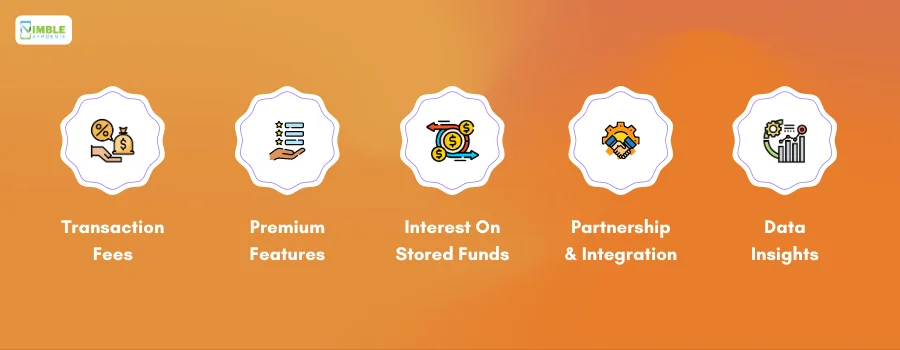
1. Transaction Fees
Charging a small fee for transactions is a common revenue model for payment apps.
These fees can be levied on merchants for each sale made through the app, or on users for specific types of transactions, such as international transfers or instant deposits.
2. Premium Features
Offering a basic version of the app for free while charging for premium features is another strategy.
These features might include higher transaction limits, advanced security options, or specialized financial reports and analytics.
3. Interest on Stored Funds
Apps like Apple Pay could earn interest on funds stored in users’ accounts, similar to traditional banking models.
This requires a large user base and substantial funds in user accounts to be significant.
4. Partnerships and Integrations
Forming partnerships with banks, financial institutions, and retailers can provide additional revenue streams.
These might involve referral fees for new customer acquisitions, shared transaction fees, or promotional partnerships.
5. Data Insights
While respecting privacy laws and user consent, anonymized aggregate data can be valuable for market research and targeted advertising, providing another potential revenue stream.
Nimble AppGenie – Your Partner in Payment App Development
Want to develop an app like Apple Pay?
Leave it to the experts! Nimble AppGenie is a market-leading eWallet app development company with extensive experience in developing payment app that generates revenue.
We have dealt with over 700 projects, earning 95% customer satisfaction. Some of our top projects include:
- Pay By Check– Pay by Check is a popular e-wallet mobile app in the United States of America. It allows users to transfer, pay, or even exchange currency.
- SatPay – An eWallet platform is a Versatile eWallet Solution that allows users to request, receive, and send payments without hassle.
- CUT– an E-wallet Mobile App, CUT is available in China and Myanmar. It works well with both RMB and MMK currencies.
- SatBorsa – a Currency Exchange Fintech app. SatBorsa is one of the platforms that is available on both platforms, iOS and Android.
So, hire app developers with a click and get your own team in 24 hours.
We are here to help you.
Conclusion
Developing an app like Apple Pay involves careful planning and significant investment but offers a promising avenue in the booming digital payment market. With its key features like convenience, security, and wide acceptance, an Apple Pay clone can tap into growing consumer demand for mobile wallet solutions. Considering factors like app complexity, chosen platforms, development team expertise, and location are crucial in determining the overall cost and development timeline. Embracing this opportunity could set you on the path to creating a competitive and innovative payment solution.
FAQs
The development cost for an app similar to Apple Pay typically ranges from $25,000 to $60,000, influenced by factors like complexity, chosen platform, and the tech stack used.
Developing an eWallet app like Apple Pay can drive digital transformation and financial inclusion, tap into a growing market demand, offer user convenience with enhanced security, open diverse revenue streams, provide a competitive edge through innovation, and has significant global expansion potential.
Key features include convenience and speed with contactless payments, wide acceptance across merchants and banks, seamless integration with Apple Wallet, robust security and privacy measures, innovative solutions like Apple Pay Later and Tap to Pay, and the incorporation of Apple Card and Apple Pay Cash for financial transactions.
The cost to hire developers varies significantly based on their expertise and location. For example, senior developers and developers located in regions like North America and Western Europe tend to command higher rates due to their high level of expertise and the high cost of living in these areas, respectively.
On average, the development process for an Apple Pay clone can take between 6 to 12 months, depending on the project’s complexity, chosen platform, and the specific features you plan to include.
Monetization strategies for an app like Apple Pay include transaction fees, offering premium features, earning interest on stored funds, forming partnerships and integrations with financial institutions and merchants, and leveraging data insights for market research or targeted advertising.

Niketan Sharma is the CTO of Nimble AppGenie, a prominent website and mobile app development company in the USA that is delivering excellence with a commitment to boosting business growth & maximizing customer satisfaction. He is a highly motivated individual who helps SMEs and startups grow in this dynamic market with the latest technology and innovation.
Table of Contents




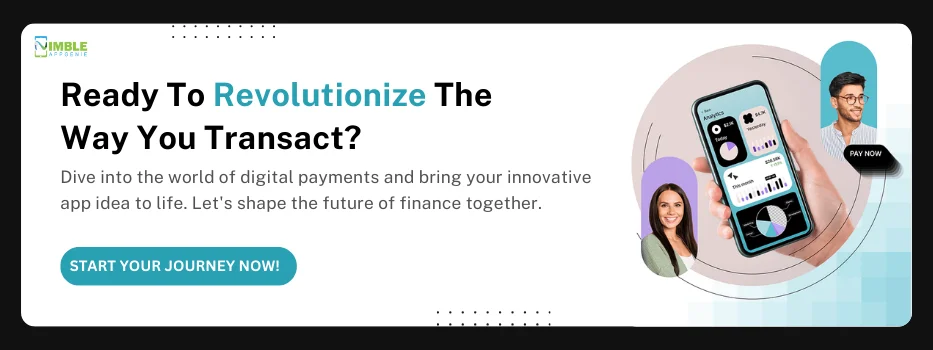
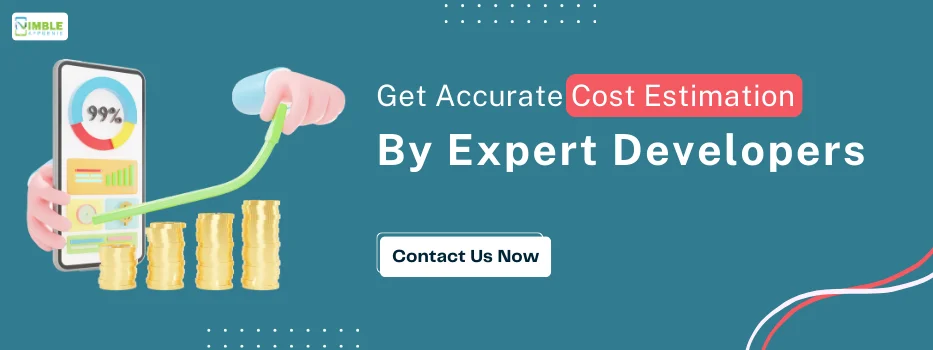
No Comments
Comments are closed.